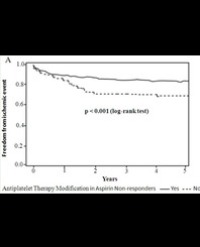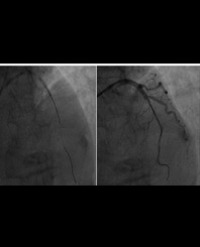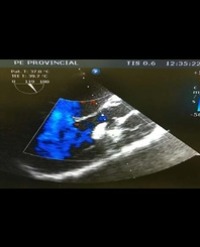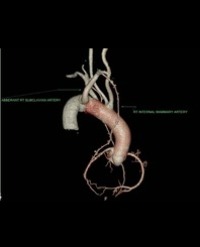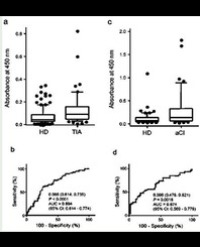
An Anti-Deoxyhypusine Synthase Antibody as a Marker of Atherosclerosis Related Cerebral Infarction, Myocardial Infarction, Diabetes Mellitus, and Chronic Kidney Disease
Background: Atherosclerosis increases the risk of acute-phase CI (aCI) and acute myocardial infarction (AMI), which can be life threatening. Atherosclerosis is also closely related to diabetes mellitus (DM) and chronic kidney disease (CKD). Novel biomarkers are needed to follow the progress of atherosclerosis.
Methods and Results: Screening by protein arrays identified deoxyhypusine synthase (DHPS) as an antigen recognized by IgG antibodies in sera of patients with both atherosclerosis and aCI and the antibody was detected in Western blots. The serum antibody levels in healthy donors (HDs) and patients with aCI, transient ischemic attack (TIA), DM, AMI, or CKD were determined by enzyme-linked immunosorbent assay (ELISA) and amplified luminescent proximity homogeneous assay (Alpha) LISA using recombinant DHPS protein. Serum DHPS antibody levels were significantly higher in patients with any of these diseases than in HDs. The difference was greatest in patients with DM and CKD. DHPS antibody levels were well correlated with artery stenosis and the presence of hypertension. The serum level of this DHPS antibody may reflect the extent of atherosclerosis caused by DM, CKD and/or hypertension.
Conclusions: Serum antibody levels against DHPS may be useful in diagnosing atherosclerosis and associated aCI, TIA, DM, AMI, and CVD.
Rika Nakamura1,2#, Go Tomiyoshi1,2#, Natsuko Shinmen1,2#, Hideyuki Kuroda2, Takashi Kudo3, Hirofumi Doi3, Seiichiro Mine4-6, Toshio Machida6, Ikuo Kamitsukasa7,8, Takeshi Wada9, Akiyo Aotsuka9, Eiichi Kobayashi4, Yoichi Yoshida4, Tomoo Matsutani4, Yasuo Iwadate4, Masahiro Mori10, Akiyuki Uzawa10, Mayumi Muto10, Kazuo Sugimoto1,10, Satoshi Kuwabara10, Minoru Takemoto11, Akiko Hattori11, Kazuki Kobayashi11, Harukiyo Kawamura11, Ryoichi Ishibashi11, Koutaro Yokote11, Yo Iwata12,13, Jun-ya Harada12, Yoshio Kobayashi12, Jiro Terada14, Takuma Matsumura14, Seiichiro Sakao14, Koichiro Tatsumi14, Mikiko Ohno15, Po-Min Chen15, Eiichiro Nishi15, Koh Ono15, Takeshi Kimura15, Kenichiro Kitamura16, Hirotaka Takizawa17, Koichi Kashiwado18, Hideaki Shimada19, Masaaki Ito19, Ken-ichiro Goto1, Xiao-Meng Zhang1, Risa Kimura1, Hao Wang1,20, Akiko Taira1, Emiko Arita1, Hiromi Ashino1, Katsuro Iwase1 and Takaki Hiwasa1*

